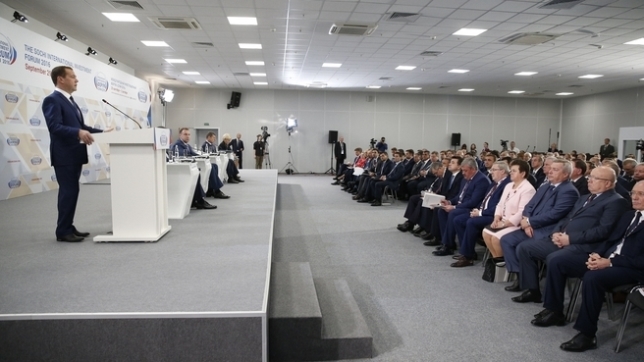The main aim of the new project policy of the Russian government is to create a plan for the development of the Russian Federation that would ensure a good balance between all processes: volume of work and resources, ends and means, a period of execution of works and quality, opportunities and risks.
This strategy relates to the field of project management (project management), which was also mentioned by the Prime Minister of the Russian Federation Dmitry Medvedev at the meeting of the Presidium of the presidential Council of the Russian Federation for strategic development and priority projects on October, 1 in Sochi. For the introduce an effective mechanism for the implementation of priority projects, the government has adopted a number of measures.
Project management – a type of control, in which temporary projects become the managed units, which allows achieving goals more effectively than in the conditions of constant processes. This approach has already been used by the other governments, including the United States and Japan. The project has clear goals and objectives that meet certain criteria, and deadlines. The results of the project may be the company’s products, research results, the soluitions of various production problems, etc. Until 1900, the projects were managed independently by architects, engineers and builders. Later, the organizations began to apply the methods of project management to complex engineering projects.
In particular, now the regions can get subsidies, only if they reach certain levels of economic development. The size of subsidies to the regions will gradually decrease, and the regions will be required to increase their economic potential. The development obligations should be precise (for examlpe, how much the subsidies will be reduced for year, the volume of investments attracted to the region, etc.). All regions, which will show additional economic growth, will receive special grants. In turn, the local authorities will have more freedom in distributing of the received subsidies and using them on priority projects. In this case, if a region does not achieve the goals, the subsidy will be reduced or not increased in the next financial year.
The analysis of the situation in the constituent entities of the Russian Federation has revealed that 39 regions are not able to provide their costs even after receiving the federal funds on maintenance of a regional budget minimum. To solve the problem, the government has decided to attract 1% of income tax from all regions to the federal budget, in order to redistribute among the regions, after finding out exactly, how much money is required for each region to achieve the budget minimum.
Moreover, if the tax funds from a region grow compared to the previous year, such gain remains in the constituent entity of the Russian Federation. As a result of attracting 1% of taxes to the budget, it will increase by 117 billion rubles, 70 billion of which will come from only 5 regions. From this sum, 84 billion will be used to increase the fund of financial support of regions, which will increase from 514 billion to 600 billion. 20 billion rubles will be spent on the increase of grants to support the regions. By contrast, the grants subsidies totaled 5 billion rubles last year. The remaining funds will be returned to the regions by the government in the future, but in 2017, the remaining funds will stay in the federal budget.
Thus, the new mechanism of regional policy will make the intergovernmental fiscal relationships more transparent and improve the efficiency of interaction between the centre and the regions.




